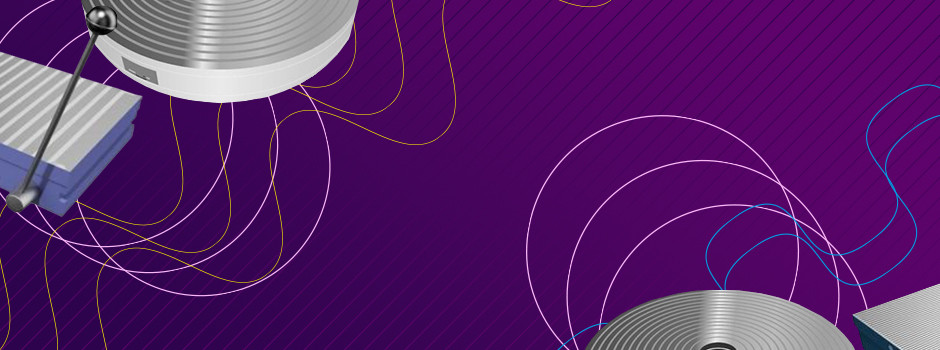Mounting on an electromagnetic plate has a number of advantages compared to clamping in a vice. The master can simultaneously place several parts, the surface of the workpieces is not deformed. Thanks to such a fixing structure, high processing accuracy is achieved. When heated, the part can expand freely, there is a possibility of processing from the side and from the end.
When using an electromagnetic attachment, the master should take into account that there is no such strong fixation as in a vice. If there is an emergency break in the power supply of the plate winding, the part may break off from the surface. The method of fastening parts using electromagnetic plates is not used with significant cutting forces. Steel parts can retain magnetism for some time.
Electromagnetic plate design
The electromagnetic plate consists of a steel body (soft metal) with pole projections on the bottom. On top there is a lid with layers of non-magnetic material. When direct current passes through the coils, the outer surface will be one pole and the rest of the plate will be the other.
The part placed on the plate closes the magnetic flux of one of the poles. This provides attraction to the surface. In order to securely fasten small parts, it is advisable to make the distance between the poles minimal. Usually, plates with grooves made of non-magnetic materials are used for small parts.
Electromagnetic tables
Rotating electromagnetic plates are called tables. For industrial purposes, such structures with fixed magnets are used. The electromagnets are arranged in a circle, and the body rotates above them. The magnetic flux closes when a direct current passes through the winding and provides attraction of the part.
In addition to non-magnetic slots, there are through non-magnetic interlayers in the design of electromagnetic tables. They divide the work surface and the housing into sectors, between which there is no magnetic connection. If the magnets on the table are not located on the entire surface, then the parts from the plate will be easily removed.
Parameters of electromagnetic plates
The main characteristic is the force of attraction of the electromagnetic plate. The indicator depends not only on the design of the plate itself, but also on the parameters of the fixed part (workpiece):
-
material;
-
size;
-
quantities;
-
positions on the plate.
The force of attraction varies between 2-13 kgf/cm2.
During operation, the stove heats up, then cools down, which causes air movement and condensation. To prevent the collection of moisture inside the structure, it is important to provide protection from the coolant. To do this, the inner cavity is filled with bitumen.
Electromagnetic plates most often operate at a current of 110V, but a voltage from 24 to 220V can be used. The design consumes 100-300 watts of power. Selenium rectifiers are used as a source.
Safety precautions when working with electromagnetic plates require a backup power supply, since the load is captured under continuous electrical voltage.
Rectangular electromagnetic plates Промсервис-М on Enex
Промсервис-М round electromagnetic plates on Enex

